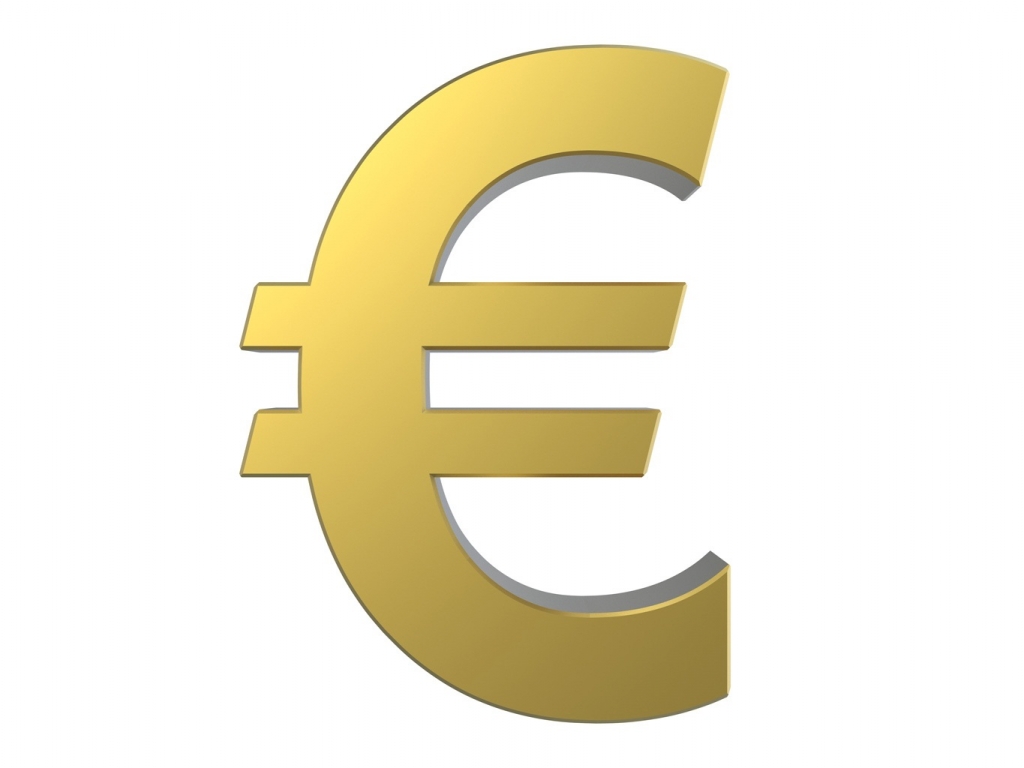Why The Euro Symbol Is More Than Just A Currency Marker
Ever wondered why the euro symbol has become such a powerful representation of unity, economy, and globalization? The euro symbol (€) is more than just a currency marker—it's a cultural icon that connects millions of people across Europe and beyond. From its design to its significance, this symbol plays a crucial role in shaping modern financial systems.
When you think about the euro symbol, it's not just about money—it's about the idea of a united Europe. This little symbol represents decades of economic collaboration, political cooperation, and cultural exchange. And let's be honest, it's pretty cool how a simple design can carry so much weight.
So, whether you're planning a trip to Europe, studying economics, or just curious about currencies, this article dives deep into everything you need to know about the euro symbol. Stick around because we're going to explore its history, design, and impact on the global stage.
Read also:Tiger Screaming At Monkey The Untold Story Behind The Roar
Table of Contents
- The Fascinating History of the Euro Symbol
- Breaking Down the Design of the € Symbol
- The Significance of the Euro Symbol in Modern Finance
- How to Use the Euro Symbol Properly
- The Global Impact of the € Symbol
- The Role of Technology in Promoting the Euro Symbol
- Common Mistakes People Make with the Euro Symbol
- What the Future Holds for the Euro Symbol
- Comparing the Euro Symbol with Other Currency Symbols
- Wrapping It Up: Why the Euro Symbol Matters
The Fascinating History of the Euro Symbol
Let's take a trip back to the late '90s when the euro symbol was born. It wasn't just some random design plucked out of thin air; it was carefully crafted to represent the ideals of Europe. The European Commission held a competition to design the symbol, and the winner was Arthur Eisenmenger, a German banknote designer.
The € symbol was officially unveiled on December 15, 1996, and it quickly gained traction. It was designed to look like the Greek letter epsilon (Ɛ), symbolizing Europe's cultural roots, with two parallel lines running through it to represent stability. Cool, right?
But here's the thing: the euro symbol didn't just pop up overnight. It took years of planning, negotiation, and collaboration between European nations. And let's not forget the economic and political challenges that came with introducing a new currency. The euro symbol became a beacon of hope and progress, showing the world that Europe could unite under one monetary system.
Key Milestones in the Euro's Journey
- 1995: The name "euro" is officially adopted.
- 1999: The euro becomes the official currency for electronic payments.
- 2002: Euro banknotes and coins enter circulation.
Breaking Down the Design of the € Symbol
Now, let's talk about the design of the euro symbol. It's not just a random squiggle—it's got meaning behind every curve and line. The two horizontal lines running through the symbol represent the stability of the euro, while the overall shape resembles the Greek letter epsilon, symbolizing Europe's rich history and cultural heritage.
Arthur Eisenmenger, the designer, wanted to create something that was both modern and timeless. He drew inspiration from ancient Greek symbols and combined them with contemporary design elements. The result? A symbol that's instantly recognizable and packed with meaning.
And here's a fun fact: the € symbol is actually a registered trademark. That means you can't just slap it on anything without permission. But don't worry, it's pretty easy to use in everyday contexts like writing prices or discussing finances.
Read also:4k Khatrimaza Movies Download Your Ultimate Guide To Highquality Entertainment
Design Elements of the € Symbol
- Two parallel lines for stability.
- A shape resembling the Greek letter epsilon.
- A modern and sleek design that appeals to a global audience.
The Significance of the Euro Symbol in Modern Finance
The euro symbol isn't just a pretty face—it plays a vital role in modern finance. As the official currency of 19 European Union countries, the euro is used by over 340 million people daily. That's a lot of buying, selling, and exchanging happening under the watchful eye of the € symbol.
For businesses, the euro symbol simplifies transactions across borders. Imagine trying to convert between multiple currencies every time you buy or sell something—it would be a nightmare! The euro symbol streamlines the process, making it easier for companies to operate in multiple countries without worrying about exchange rates.
But it's not just about convenience. The euro symbol also promotes economic stability. By having a single currency, countries can work together to manage inflation, control interest rates, and maintain a stable financial system. And let's not forget the psychological impact—it gives people a sense of unity and belonging.
Benefits of the Euro Symbol in Modern Finance
- Simplifies cross-border transactions.
- Promotes economic stability.
- Encourages unity and cooperation among European nations.
How to Use the Euro Symbol Properly
Alright, so you know what the euro symbol looks like, but do you know how to use it properly? It's not as simple as slapping it next to a number. There are some rules you need to follow to make sure you're using it correctly.
First things first: the € symbol always comes before the number. So, it's €10, not 10€. This might seem like a small detail, but it's important for consistency. And don't forget the space between the symbol and the number—it's a tiny gap, but it makes a big difference.
Another thing to keep in mind is the decimal point. In most countries, the decimal point is used to separate whole numbers from fractions. So, if you're dealing with amounts less than one euro, it would look like €0.50. Easy, right?
Proper Usage of the Euro Symbol
- Place the € symbol before the number.
- Include a space between the symbol and the number.
- Use a decimal point for fractions of a euro.
The Global Impact of the € Symbol
The euro symbol isn't just a big deal in Europe—it's a global phenomenon. As the second most traded currency in the world, the euro plays a crucial role in international trade and finance. Countries outside the Eurozone often use the euro for transactions, especially in regions where the euro is more stable than their local currency.
But the impact of the € symbol goes beyond finance. It's a symbol of unity and cooperation, showing the world that countries can come together to achieve common goals. And let's not forget the cultural significance—it's a reminder of Europe's rich history and diverse traditions.
So, whether you're in Europe or halfway around the world, the euro symbol has the power to connect people and promote understanding. It's more than just a currency—it's a symbol of hope and progress.
Global Influence of the Euro Symbol
- Second most traded currency worldwide.
- Promotes unity and cooperation among nations.
- Symbolizes Europe's rich cultural heritage.
The Role of Technology in Promoting the Euro Symbol
In today's digital age, technology plays a huge role in promoting the euro symbol. From online banking to mobile payments, the € symbol is everywhere. Apps, websites, and digital wallets make it easier than ever to use the euro in everyday transactions.
But it's not just about convenience. Technology has also made it easier to track the value of the euro and monitor economic trends. Financial analysts can use data from digital platforms to make informed decisions about investments and trading. And for consumers, it's easier to compare prices and make smart purchasing decisions.
So, whether you're checking your bank account on your phone or shopping online, the € symbol is right there with you, helping you navigate the modern financial world.
Technological Advancements Supporting the Euro Symbol
- Online banking and mobile payment apps.
- Data analytics for tracking economic trends.
- Easy price comparisons for consumers.
Common Mistakes People Make with the Euro Symbol
Even though the euro symbol is pretty straightforward, people still make mistakes when using it. One of the most common errors is placing the symbol after the number instead of before it. Remember, it's €10, not 10€. Another mistake is forgetting the space between the symbol and the number—those little details matter!
And let's not forget about the decimal point. Some people use a comma instead of a period, which can cause confusion, especially when dealing with international transactions. Stick to the standard format to avoid any mix-ups.
So, whether you're writing a check, typing up an invoice, or just sending a quick text, double-check your use of the € symbol to make sure you're doing it right. Trust me, it'll save you a headache in the long run.
Avoiding Common Mistakes with the Euro Symbol
- Always place the € symbol before the number.
- Include a space between the symbol and the number.
- Use a decimal point for fractions of a euro.
What the Future Holds for the Euro Symbol
So, what's next for the euro symbol? As the world becomes more interconnected, the role of the € symbol is only going to grow. With the rise of digital currencies and blockchain technology, the euro could evolve to meet the demands of a changing financial landscape.
But one thing's for sure: the euro symbol will continue to be a powerful representation of unity, stability, and progress. Whether it's used in traditional banking or cutting-edge fintech, the € symbol will remain a cornerstone of the global economy.
And who knows? Maybe one day we'll see the euro symbol adopted by even more countries, further strengthening its position as a global currency. Only time will tell, but one thing's for sure—the € symbol is here to stay.
Comparing the Euro Symbol with Other Currency Symbols
When you think about currency symbols, the euro symbol stands out for its unique design and significance. Unlike the dollar ($) or the yen (¥), which are simple and straightforward, the € symbol is packed with meaning and history. It's a reminder of Europe's cultural heritage and its commitment to unity and cooperation.
But that's not to say other currency symbols don't have their own charm. The dollar symbol, for example, is instantly recognizable and carries a lot of weight in the global economy. And the yen symbol has its own rich history, dating back centuries. Each currency symbol has its own story to tell, and the € symbol is no exception.
So, whether you're a fan of the euro, the dollar, or any other currency, it's worth appreciating the unique qualities that make each symbol special. After all, they're more than just symbols—they're representations of the world's diverse economic systems.
Wrapping It Up: Why the Euro Symbol Matters
As we've explored in this article, the euro symbol is more than just a currency marker—it's a powerful representation of unity, stability, and progress. From its fascinating history to its impact on modern finance, the € symbol plays a crucial role in shaping the global economy.
So, the next time you see the € symbol, take a moment to appreciate all that it represents. Whether you're using it to buy groceries, pay bills, or invest in the stock market, remember that it's more than just a symbol—it's a connection to a rich cultural heritage and a shared future.
And don't forget to share this article with your friends and family! The more people understand the significance of the euro symbol, the better equipped we all are to navigate the complexities of the modern financial world. So, what are you waiting for? Spread the word and let's celebrate the power of the € symbol together!
Level Up Your Gaming Experience With The L3 PS5 Controller
Melissa G Moore: The Inspiring Journey Of A Modern-Day Trailblazer
Sone-620 Nagi: The Ultimate Guide To Unlocking Its Potential

Euro Logo / Banks and Finance /
Euro Waste SVG Vectors and Icons SVG Repo

Clipart Euro sign